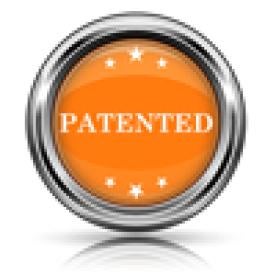Takeaway: A motion to submit supplemental information should identify the instituted claims to which the proffered information relates and explain its relevance.
In its Decision, the Board denied Petitioner’s motion to submit supplemental information, stating that “[t]he filing of a petition for inter partes review should not be turned into a two-stage process, first to elicit a claim interpretation by the Board, and second to complete the petition on the basis of that claim interpretation.”
After obtaining authorization from the Board, Petitioner submitted a motion to submit what would be Exhibits 1035-1045 as supplemental information. Patent Owner contended that the proffered exhibits are confidential; therefore, Petitioner submitted a motion to seal with a proposed protective order but did not file the proposed exhibits themselves. Patent Owner opposed both motions.
The Board began by analyzing the law applicable to the motion to submit supplemental information and determined that it disagreed with Petitioner’s statement regarding the applicable law in three respects. First, the Board disagreed with Petitioner’s contention that “under section 123(a) supplemental information may be filed if the request is made within 30 days of institution and if such information is relevant to a claim for which trial has been instituted.” The Board stated that “section 123(a) specifies the requirements for authorization to file a motion to submit supplemental information, not the requirements to file the proffered information.” Second, the Board disagreed with Petitioner’s statement “that it need not be demonstrated that the information offered could not have been obtained earlier.” Section 123(a) “does not contain an explicit requirement to show that the information could not reasonably have been obtained earlier;” however, “ Petitioner’s opportunity to have submitted the proffered information with the petition rather than as supplemental information is a permissible consideration in evaluation of a motion under section 123(a).” Third, the Board determined that Petitioner’s definition of “relevant” was incomplete because it did not address Federal Rule of Evidence 401(b), “which requires that the evidence be a fact of consequence in determining the action,” and further determined that “[i]n the context of a motion to submit supplemental information, a fact is of consequence if it relates to a claim subject to a ground of unpatentability for which trial was instituted.”
The Board then considered the parties’ arguments concerning whether to grant Petitioner’s motion to submit supplemental information. First, the Board concluded that “Petitioner’s motion is deficient” because the Board was “unable to discern which of the proffered exhibits were available prior to filing of the Petitions.” Next, the Board considered the relevance of the proffered information.
With respect to IPR2014-01511, the Board stated that “Petitioner does not explain how the proffered information relates to any claim subject to a ground of unpatentability for which trial was instituted.” Accordingly, it concluded that “Petitioner has not demonstrated that the motion to submit supplemental information should be granted with respect to IPR2014˗01511.”
With respect to IPR2014˗01510 & 2014˗01513, Petitioner contended that “the proffered information is relevant to how the claim term ‘line replaceable unit’ (LRU) would be understood by a person of ordinary skill in the art” as used in certain of the challenged claims. The Board noted that Petitioner could have presented an explicit construction of the claim term earlier and stated that “[t]he filing of a petition for inter partes review should not be turned into a two-stage process, first to elicit a claim interpretation by the Board, and second to complete the petition on the basis of that claim interpretation.” Petitioner also contended that “the proffered information is relevant to ‘alternatives available to, and specific motivations of, one of ordinarily [sic] skill in the art with respect to vacuum toilets,’ and ‘to demonstrating how those of ordinary skill in the art actually performed ‘methods of servicing’ vacuum toilets.’” The Board, however, was not persuaded because (1) Petitioner did not identify an instituted claim that relates to the proffered information, and (2) Petitioner did not “demonstrate[] adequately that the proffered information [which Patent Owner argued was confidential] was part of the knowledge of a person of ordinary skill in the art at the time of the claimed inventions.”
Thus, the Board concluded that Petitioner had not “established entitlement to the requested relief” and denied the motion.
B/E Aerospace, Inc. v. MAG Aerospace Industries, LLC, IPR2014-01510, -01511, -01513 Paper 37: Decision – Petitioner’s Motion to Submit Supplemental Information
Dated: May 26, 2015
Patent: 6,353,942 B1; 6,536,054 B2; 6,536,055 B2
Before: Josiah C.Cocks and Phillip J. Kauffman Written by: Kauffman



 i
i


